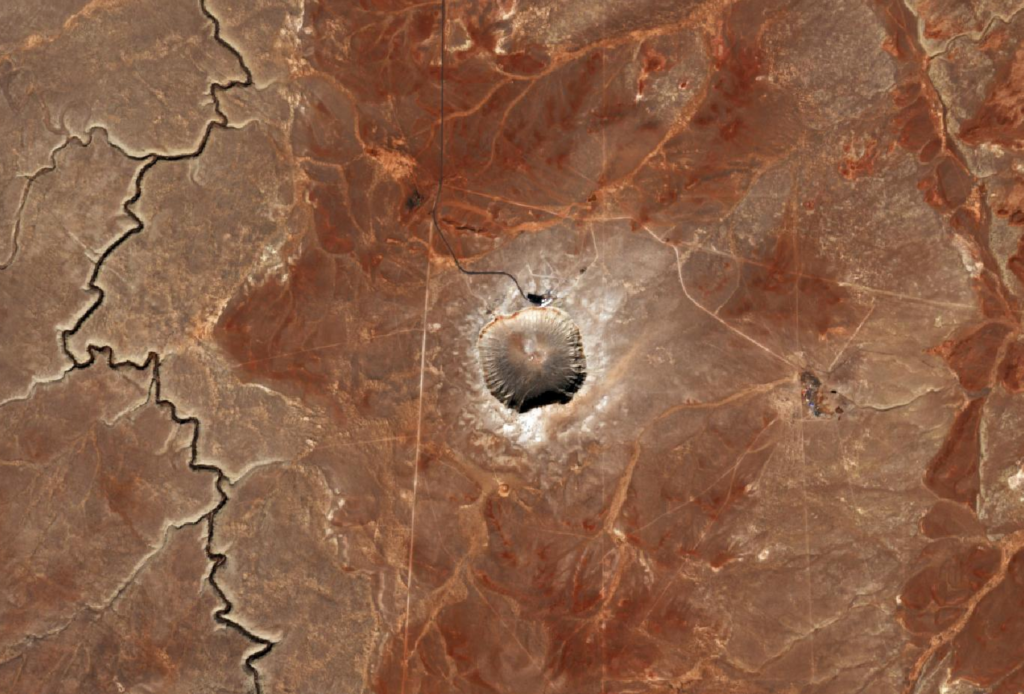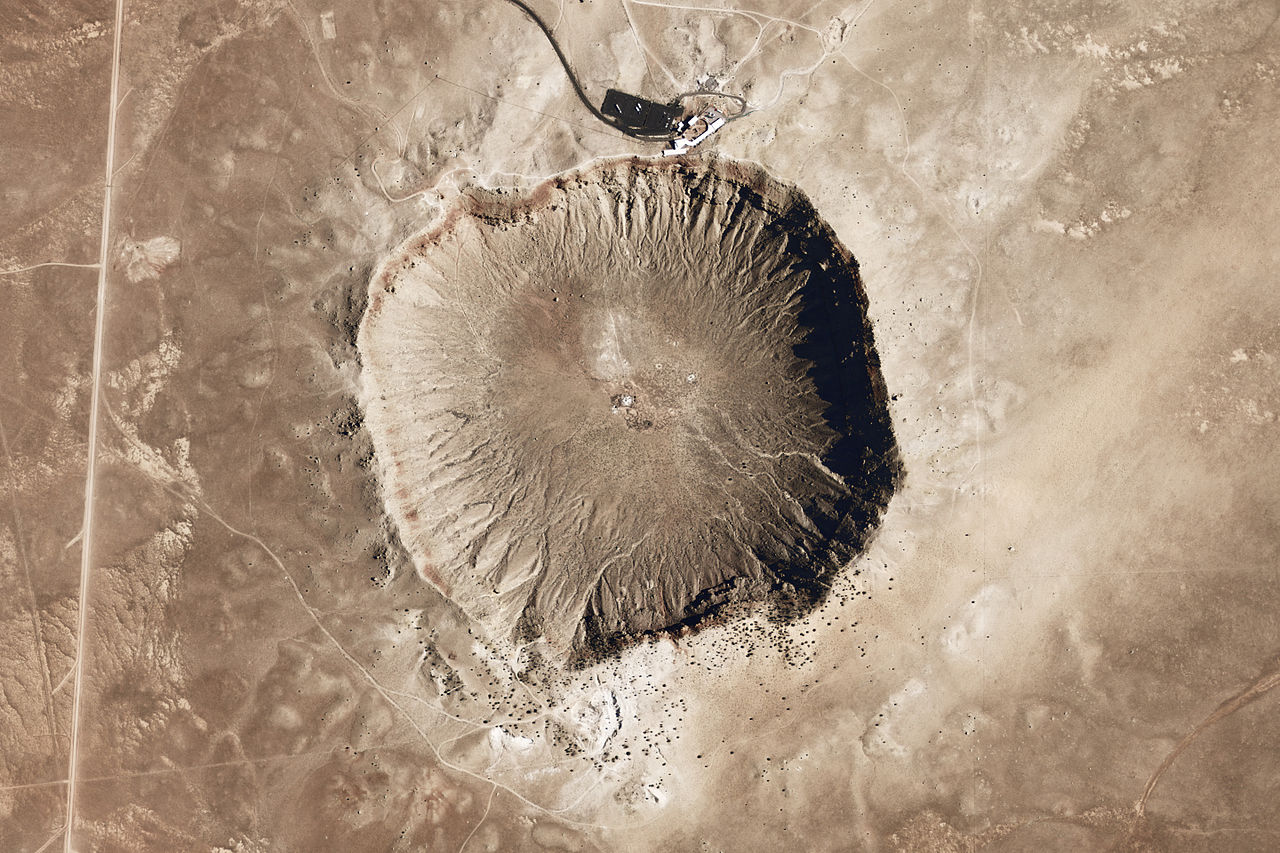In anticipation of the International Asteroid Day celebrated on June 30, ESA published an image taken by the Sentinel-2 satellite. It shows the famous Arizona crater, also known as the Barringer Meteorite Crater.

About 50,000 years ago, an iron-nickel meteorite, estimated to be 30 to 50 meters in diameter, entered Earth’s atmosphere and fell into the territory known today as Arizona. The violent impact created a bowl-shaped hole more than 1,200 meters across and 180 meters deep in a location that was once a flat rocky plain.
During the formation, millions of tons of limestone and sandstone were dislodged from the crater, covering the surrounding area with debris for more than a kilometer in all directions. Large blocks of limestone, about the size of a small house, were thrown to the edge of the sinkhole.
One of the main features of the crater is its square shape. It is believed that it was caused by defects in the rock that caused it to flake off in four directions on impact.
The impact occurred during the last ice age, when the plain around it was covered with forest where mammoths and giant sloths grazed. Over time, the climate changed and became drier. The desert we see today has helped preserve the crater by limiting its erosion, making it a great place to study impact crater formation.

Arizona Crater is considered one of the places on Earth that most closely resembles lunar terrain. So in the 1960s it was used to train astronauts preparing to go to the Moon. Now it is a popular tourist attraction. About 270 thousand people visit the crater every year.
Earlier we told you about the craters located on the territory of Ukraine.
According to ESA


